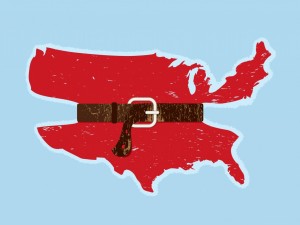 Medicaid is heading for a squeeze. No doubt. One of my jobs is to try to keep up on how that Medicaid squeeze may come about. My guess is it will come in the form of something called a “waiver.” Learn about waivers here and see what may be coming to a state near you.
Medicaid is heading for a squeeze. No doubt. One of my jobs is to try to keep up on how that Medicaid squeeze may come about. My guess is it will come in the form of something called a “waiver.” Learn about waivers here and see what may be coming to a state near you.
In case you have been busy mapping tributaries on the Amazon, the US is in the middle of a budget crisis. I do not believe anyone can dispute that something must be done; the dispute will be over what that something will be.
Currently Congress is playing chicken with a looming government shutdown while arguing over $30 to $60 billion for the 2011 budget (a budget year half over, by the way).
It is on the 2012 budget where the REAL fun will start. The federal budget is divided between Mandatory and discretionary spending.  Discretionary spending includes numerous programs, notably defense. Mandatory spending includes Social Security, Medicare and Medicaid. As can be seen from the charts, “mandatory” spending chews up 55% of the current budget.
Discretionary spending includes numerous programs, notably defense. Mandatory spending includes Social Security, Medicare and Medicaid. As can be seen from the charts, “mandatory” spending chews up 55% of the current budget.
Remember, the House of Representatives writes/approves the budget. The preliminary action comes in the House Budget Committee. The chairman of that committee is Wisconsin Representative Paul Ryan.
Ryan was on Fox News Sunday on April 3 to discuss Republican proposals to cut $4 trillion in spending over the next 10 years. One of the targets will be Medicaid, and Ryan mentioned the word “Waiver.”
To understand what a “Waiver” is one must understand a bit about how Medicaid is paid for.
Let’s look.
The Overview
Think of Medicaid in two parts: Acute care (hospitals, doctors, drugs) and long term care (nursing homes and community care).
Medicaid is actually jointly funded by the states and the federal government. The feds pick up a larger share of the tab for states with lower per capita income. On average, the feds pay for 57% of Medicaid costs. The 2011 federal share for Medicaid acute care is $155 billion and for long term care it is $71 billion. The more states spend, the more the feds kick in. According to the Congressional Budget Office (or “CBO”), the outlays will increase dramatically over the next decade as the Boomers continue to age.
When it comes to benefits provided and eligibility standards under Medicaid, the feds set the general rules. The states are somewhat free to improvise, but that ability is limited because the feds set the minimum rules. In other words the states must “color inside the box” the feds have drawn for them.
A state may color outside the lines, however, if the feds “waive” the usual rules. Thus the term “Waiver.”
The CBO Waiver Option
In March, the CBO issued a report called Reducing the Deficit: Spending and Revenue Options. The report lays out extensive suggestions for budget cutting together with projected revenue savings associated with each cut.
With respect to long term care (nursing home) Medicaid, the CBO offers an alternative that would grant the states effective waivers to devise their own benefit levels and eligibility standards. The CBO suggestions are couched in terms of block grants – essentially give the states money and have them devise and run individual long term care programs.
The block grants would be tied to the fed’s 2010 payment levels and would be indexed according to one of two suggested methodologies. Projected savings would vary from $41 billion to $73 billion through 2016.
Presumably Representative Ryan is thinking along these lines.
Pros and Cons of CBO Waiver or Block Grant
On the plus side, the idea would eliminate the extra federal subsidy for big-spending states and provide greater predictability in federal outlays. Further, once freed to devise their own program standards, states would be free to save by imposing more stringent eligibility rules.
Of course, one of the drawbacks of such an approach is also a disadvantage to some: The states would be free to impose much stricter eligibility requirements. Further, much of the growing burden of caring for aging Boomers would simply be shifted to the states . . . or simply shifted away someplace . . . . perhaps to a galaxy far, far away . . . . Finally, such an approach would create greater disparities between the states on benefits offered and eligibility criteria. Medicaid would cease to be a federal program (which, depending upon one’s point of view, may or may not be bad).
My biggest criticism of the approach is that it fails to address the underlying problem or need. I have suggested an insurance-based solution to long term care costs based upon a strategy similar to the CLASS Act and the current Medicare Supplemental Insurance scheme. Alas, Congress does not consult with me.
Plan Ahead!
My advice: Plan Ahead! This is no time to sit around to see what might happen.
